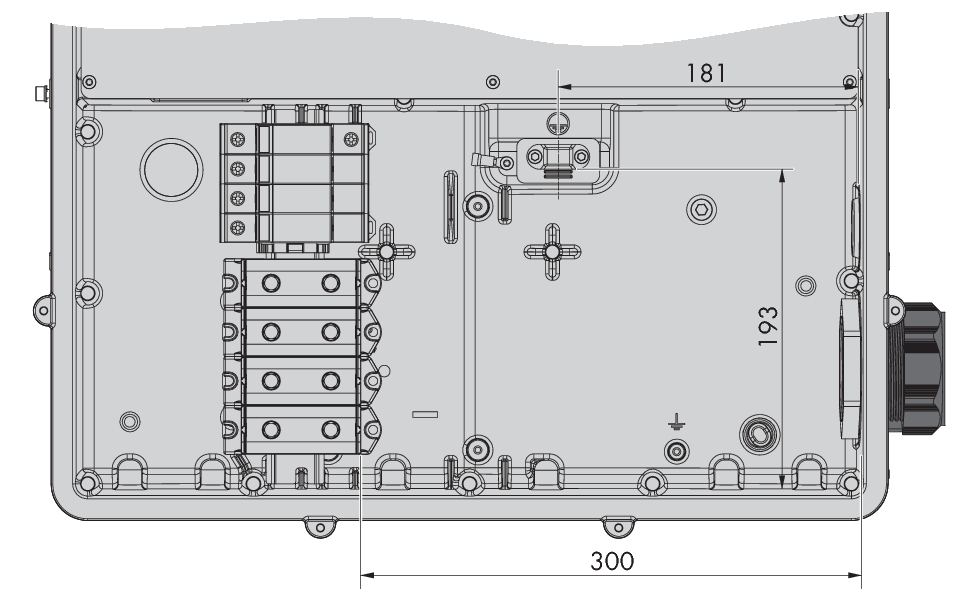Requirements for the AC Connection

Cables to be connected by means of cable glands
As standard for this inverter, the cables are to be connected by means of cable glands. SMA Solar Technology AG recommends using the cable glands included in the delivery. If required, adapters for conduits can be mounted on the enclosure openings of the inverter instead of using cable glands. Thus, cables laid in the conduits can be routed into the inverter. When using conduits, all locally applicable laws, standards and directives must be observed and the conduits as well as the enclosure openings must be protected against penetrating moisture.
AC cable requirements as follows:
Conductor type: aluminum and copper wire
External diameter: 35 mm to 48 mm / 26 mm to 39 mm
Conductor cross-section of grounding conductor: 25 mm² to 120 mm²
-
Conductor cross-section of line conductor and neutral conductor: 35 mm² to 120 mm²
Insulation stripping length: 30 mm
Sheath stripping length: 290 mm
-
The cable must be dimensioned in accordance with the local and national directives for the dimensioning of cables. The requirements for the minimum wire size derive from these directives. Factors influencing cable dimensioning include nominal AC current, cable type, routing method, cable bundling, ambient temperature and maximum desired line losses.
Overview of the required length of the conductor inside the AC connection unit

Interior view of the AC connection unit with dimensions for the conductors (Dimensions in mm)
Load-break switch and cable protection:
NOTICE
Damage to the inverter due to the use of screw-type fuses as load-break switches
Screw-type fuses (e.g. DIAZED fuse or NEOZED fuse) are not suitable as load-break switches.
- Do not use screw-type fuses as load-break switches.
- Use a load-break switch or a circuit breaker for load disconnection.
In PV systems with multiple inverters, protect each inverter with a separate three-phase circuit breaker. Make sure to observe the maximum permissible fuse protection ( > Technical Data). This will prevent residual voltage from being present at the corresponding cable after disconnection.
-
Loads installed between the inverter and the circuit breaker must be fused separately.
Residual-current monitoring unit:
The inverter does not require an external residual-current device when operating. If local regulations require the use of a residual-current device, the following must be observed:
-
The inverter is compatible with type B residual-current devices that have a rated residual current of 300 mA or higher (information about the selection of a residual-current device see technical information "Criteria for Selecting a Residual-Current Device" at www.SMA-Solar.com). Each inverter in the system must be connected to the utility grid via a separate residual-current device.
-
When using residual-current devices with a rated residual current < 500 mA, the rated residual current must be set in the inverter ( > Setting the Rated Residual Current of the Residual-Current Device). In this way the inverter reduces the operational leakage currents and prevents a false triggering of the residual-current device.
